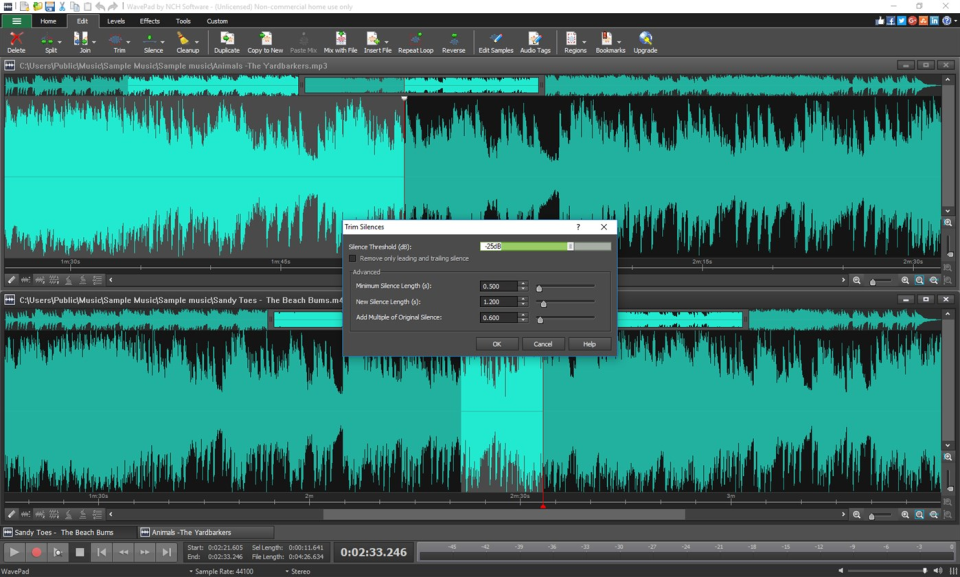

In a case like this, you should include this three-second buffer of ambient sound in the final sound file that you upload to eBird. Looking at the waveform of this recording, we see that the three seconds that are highlighted are “clean audio,” with no recordist noise or prominent, potentially confusing background species. The first step is to listen to the recording, find where the first sound from the target species occurs, and then highlight the three seconds immediately before that sound:

Below is a single sound file, without any pauses, with five songs from a Swamp Sparrow: If you have a single sound recording that you’d like to upload to an eBird checklist, it can be prepared in just a few easy steps. With this approach, using the “Save” function will just make changes to a file that you have specifically designated for editing purposes.

To deal with this issue, the Macaulay Library recommends keeping two copies of your original sound files (one on your computer and another on an external hard drive), and then making edits to a third copy. WavePad is a destructive editing program, which means that if you edit a file and then use the “Save” function, the file will be permanently altered to reflect the changes that you made.
#How to use wavepad how to#
Continue on for a step-by-step demonstration of how to edit recordings for upload. WavePad is a free program (paid premium version also available) that works well for editing audio recordings for submission to the Macaulay Library.


 0 kommentar(er)
0 kommentar(er)
